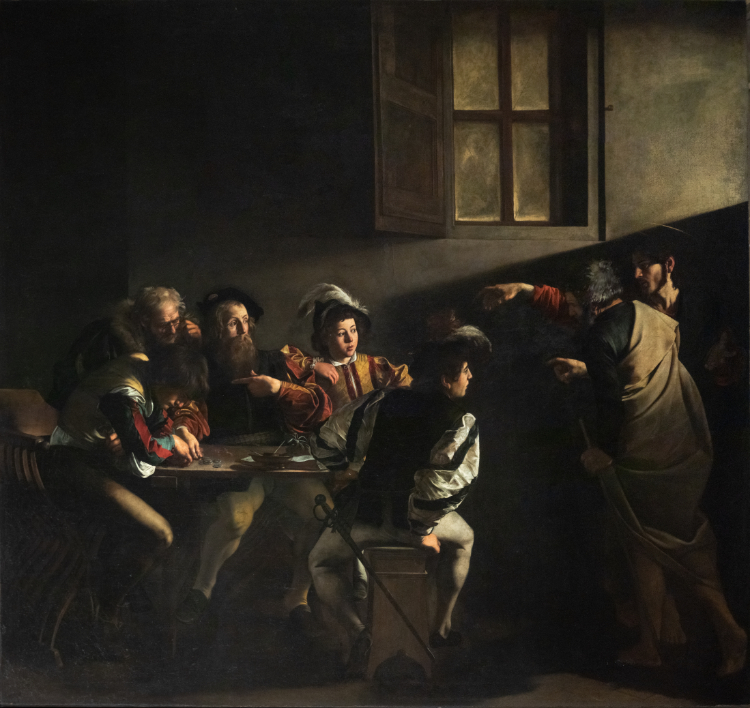The Calling of St. Matthew by Caravaggio

The Calling of St. Matthew
The Calling of St. Matthew by Caravaggio is considered to be the renowned murderer's most famous painting and is representative of the Baroque style.
Baroque paintings matched their Renaissance predecessors in the level of detail and realism, but where Renaissance paintings preferred symmetry and serene settings, Baroque paintings favored unbalanced compositions and dramatic flair. They were the R-rated versions replete with violence and "adult situations" to the Renaissance's PG themes.
Tenebrism
The concept of chiaroscuro was common in Baroque art. In short, it's the use of light and dark in order to create a sense of depth and realism.
Caravaggio took that a step further with tenebrism. Tenebrism is chiaroscuro on steroids (think of it as the Film Noir version of paintings). It was used specifically to heighten the dramatic effect of the composition via the strong dichotomy of light and dark.
Followers of Caravaggio's style were referred to by the equally poetic terms Caravaggisti or Tenebrosi.
Give 'em a Hand
If Jesus's hand positioning looks familiar, it's probably because you recognize it from Michelangelo's Sistine Chapel. Jesus's hands here are modeled after Adam's in that fresco, symbolizing Christ as the redeemer and the bridge between God and Man.
Everyday People
Caravaggio's best known works (like this one) focus on religious themes. However, instead of using stylized or classical settings, he treated the subjects as if they were part of an everyday routine (occasionally to the chagrin of the Church, which felt he wasn't always giving the subject matter due reverence).
